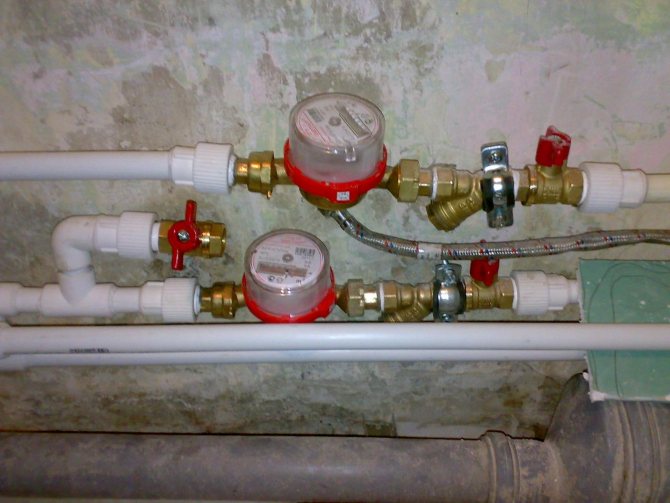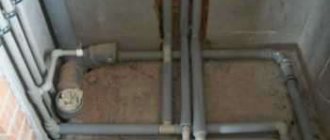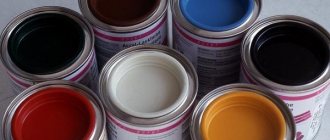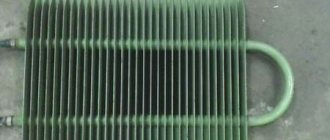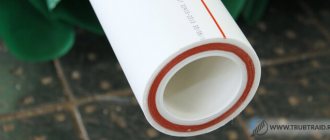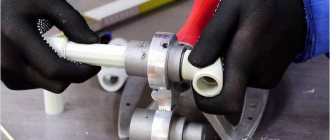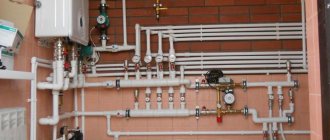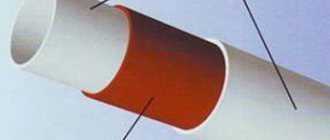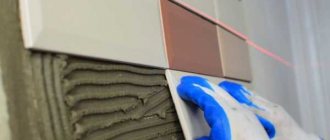Advantages of a polypropylene pipe
Polypropylene has a number of advantages, including:
- heat resistance (in connection with which they are used to supply both cold and hot water);
- wear resistance;
- density and strength;
- not susceptible to corrosion.
Plastic elements can be made in different colors. To do this, a dye is immediately added to the plastic. But what if you bought white plastic materials and couldn't hide them?
In this case, there is a way out - to paint the plastic pipes with paint that would fit into the interior of the room. For example, many people decide to paint such elements to match the color of the walls to make them less visible. Others, on the contrary, focus on painted pipes. For example, you can paint them green and then wrap them with artificial grape leaves. Painted in this way, they will look like the trunk of a grape tree. But this option is suitable, of course, only for the kitchen.
DESIGN PRESTIGE LLC
Hot water pipe paints
Manufacturers indicate on the packaging what this or that dye is intended for. It is necessary to choose enamel for hot water pipes. According to GOST, they must withstand temperatures up to 150 ° C, despite the fact that the average temperature in the pipes is up to 70 ° C. For metal pipes, anti-corrosion enamels are used. Otherwise, the paint will crack and the metal will oxidize.
To paint pipes indoors, you should choose an odorless paint. Otherwise, when heated, it will exude an unpleasant odor, the dyeing process can take place with complications for the health of the master and households.
Methods for painting polypropylene pipes
DESIGN PRESTIGE LLC
Painting with ordinary paint for metal
People write a lot about this method on the forums, and the reviews are mostly good.
The advantages of using the method are:
- availability. Finding paint for metal is the easiest way. It is very widely used for household purposes. And if you're lucky, you can find it at home in the pantry, because when painting batteries, exactly the same paint is used;
- low price;
- ease of application. No base needed, no need to rub over the pipe - just apply paint and let it dry.
But there are also disadvantages when painting with this method:
- Not as intended. When paint for metal was created, they did not even hear about polypropylene pipes. That is, it has not been precisely studied exactly how it acts on plastic. Although this method of painting plastic pipes is still very popular.
- Smell. The paint has a rather nasty and pungent smell, so it is necessary to paint with an open window. Otherwise, you will get at least mild chemical poisoning (or intoxication from chemicals).
- Density. This paint has a fairly thick consistency. But in no case should it be diluted with water! This consistency can cause small drips on the pipe, so you need to act carefully and carefully spread it over the entire surface of the pipe.
Painting with regular wall paint
But in this case, there are slightly more disadvantages:
- instability... Such paint is not designed for heating, and if pipes are used for heating, this will lead to negative consequences;
- destruction... Do not use water-based paint, as it destroys the top layer of the pipe itself (causing corrosion). If, nevertheless, paint on water is used, then it is imperative to apply the base to the pipe - alkyd enamel. This will prevent negative effects.
But there are also pluses:
- stealth. The pipe is painted with the same paint as the walls, and practically merges with it.This makes it as invisible as possible;
- versatility;
- diversity. Wall paint comes in all kinds of flower and shades;
- usual work.
Painting with a pre-primer
This method is, rather, not in the paint itself, but in the base under it. Often a special spray is used for the primer. It will protect the pipe. This primer is often used in car dealerships and tire changers. Therefore, you can find it there. Having processed the necessary object, you need to give it time to dry. And then you can paint the element with any paint. The main rule that should be followed when choosing it is heat resistance. It is indicated on the label of any paint.
Painting with acrylic paint
Acrylic paint is considered the softest for coating polypropylene pipes. The solvent in it is not hazardous to plastic, unlike many other paints.
The positive features of this choice are:
- safety - does not damage the material;
- wide range of colors;
- ease of application;
- lack of a pungent smell.
Painting metal pipes ↑
The general rule for pipes made of ferrous metal: clean the steel from rust, first coat with a primer, only then paint.
To paint metal pipes you will need:
- Tools for cleaning the pipe surface from rust and old paint: grinder, grinder, impeller, sandpaper, spatula.
- Household chemicals to prevent rust and remove its remnants.
- Brush "flutes" or roller.
- Primer for metal pipes
- Rags
- Covering material to prevent paint from spilling onto surrounding objects.
- Gloves.
Do not paint rusty pipes, they need to be prepared. Corrosion traces are completely removed with a hard wire brush and sandpaper. Phosphoric acid-based rust removers can only help by modifying small, hard-to-reach areas of corrosion left over from machining.
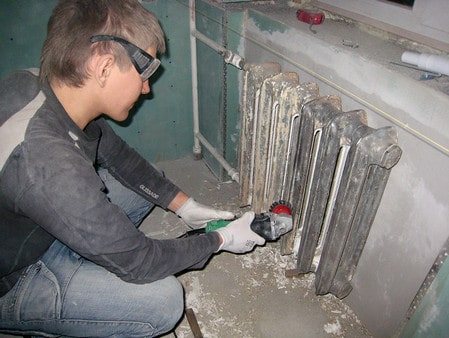
Old pipes and batteries are cleaned of rust, and if they want to get a neat look, they also remove old paint.
To paint a metal pipe, you should choose primers and paints based on organic solvents. Water-soluble ones cannot be used. Of the primers, the domestic GF-021 has an excellent price / quality ratio.
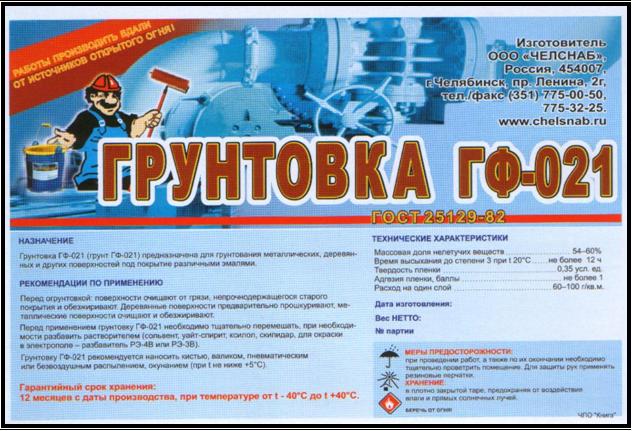

Instructions for the primer GF -21.
We can recommend domestic oil paints, pentaphthalic paints, ours and imported alkyd paints. If a primer is available, an aqueous topcoat can also be used. Today, manufacturers also offer universal coloring compositions that simultaneously function as a primer and paint. It is more convenient to work with them, because you can paint a steel water pipe or cast iron pipe in one go. However, the traditional version still gives the best results: the primer provides the best adhesion of the coating to the surface, and the paint provides a smooth and easy-to-clean finish. In addition, the variety of shades of paints is much wider than that of primers.
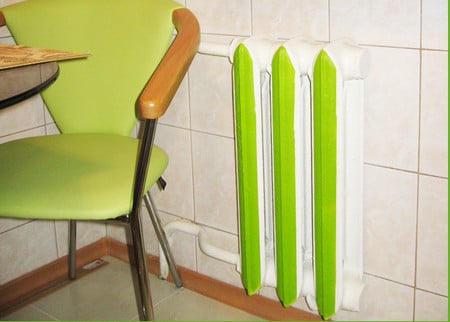

You can paint pipes and radiators in any color that matches the interior design
As for heated towel rails, modern models are made of stainless steel or have an electroplated coating, you only need to paint very old ones, made of ordinary metal.
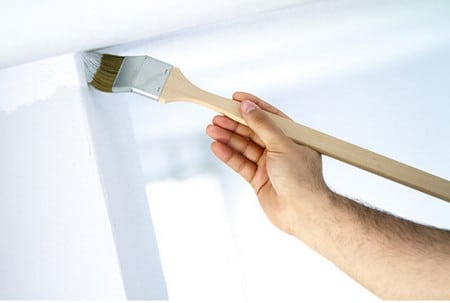

For pipes and radiators, it is convenient to use such an L-shaped brush with a long handle, with its help you can paint hard-to-reach places
Galvanized water pipes do not need to be painted, except in places where the threads are manually cut, where the coating is broken. It is impossible to weld galvanized steel, but if this has already been done, the seam should also be protected.
Calculation of the amount of paint


Try to calculate the amount of paint required, because this will help to save some of the money.
Knowing the diameter and length, it will not be difficult to calculate the material consumption.
It is interesting that each manufacturer of pipe paint indicates on its products an approximate consumption per square meter of surface when painting in 1 layer. Do not forget that we should have two layers.
The bottom line is simple: it remains to calculate the surface area of the pipeline and reduce the calculation to an elementary mathematical problem.
Let's turn to geometry: to calculate the surface area of a cylinder, you need to produce the circumference (pi per diameter) by the height of the cylinder, that is, the length of the pipe. Thus, the surface area of the product is the product of length and diameter and pi.
For example, let's calculate the amount of paint according to the following parameters: consumption 300 g / m2, pipe length - 10 m, outer diameter - 20 mm. In this case, the area of the pipes will be 0.02 * 10 * 3.14 = 0.628 m2. To calculate the material consumption for each layer, it is enough to multiply the resulting area by 300 grams, we get 0.188 kg. We have two layers, obviously it will take twice as much paint (0.376 kg).
Our example is taken from the head, because with such a volume of coloring, no one will waste time on calculations and calculate millionths. This principle is also suitable for large pipelines.
So, we examined the methods for calculating paint for painting the surface of water pipes. We hope this information will be useful to you.
Which plastic pipes can be painted?
There are different types of plastic, and each material has its own properties. There is such a material that it cannot be painted at all. If plastic pipes are made made of polypropylene or polyethylene (PE), it is almost impossible to paint them well and whatever they paint, any paint will start to peel off from them.
Plastic based on PVC or ABS can be painted, but its surface must first be covered with a special primer.
When choosing a paint, you need to look at its such characteristics:
Also read: Types of plastic pipes for water supply
- the presence of organic compounds in its composition;
- drying time: it should not be more than twelve hours;
- the degree of repulsion from the surface and hardness.
Application features
The choice of color for staining depends on preference. Some cover products to match the walls, while others make the installed pipe rolling more noticeable in the interior.
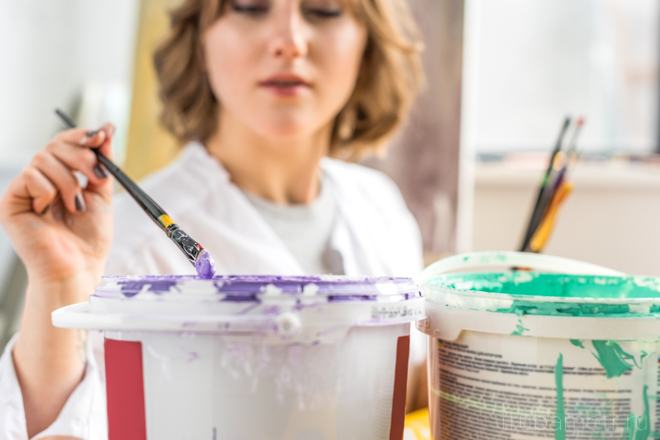

Choice of paint
So, you can paint the pipes green, and then decorate them with artificial grape leaves. The result is a grape vine that will look good in the kitchen with the appropriate design of the entire room.
Dyes for metal
Conventional paint for metal has the following advantages:
- Low cost
- Availability, sold in all hardware stores.
- Ease of use because there is no need to prepare the base. The composition is simply applied and dries on the surface.
Often, painting with conventional dyes for metal substrates is carried out using a spray gun. The device allows you to evenly distribute the composition over the surface.
The use of paint for metal is accompanied by an unpleasant and pungent odor. Such substances have a thick consistency. Therefore, the process must be performed as quickly as possible and additionally use a solvent to dilute the dye composition.
Conventional dyes
This method of painting polypropylene pipes has many negative aspects. The main disadvantage is the instability of the coloring compositions when applied to heating pipelines.
Wall paint cannot withstand extreme heat. Therefore, the appearance of the created coating will deteriorate over time. The applied top coat will begin to peel off. Therefore, after a while, you will have to repeat the dyeing process.
Using regular wall paint can reduce the visibility of pipes in the interior. After all, the system will have the same color as the wall structures.
Acrylic and polyurethane
Acrylic and polyurethane dyes belong to the group of "soft" compounds used at home for painting polypropylene pipelines. One of the components of such substances is a solvent. However, it does not harm the plastic in any way.
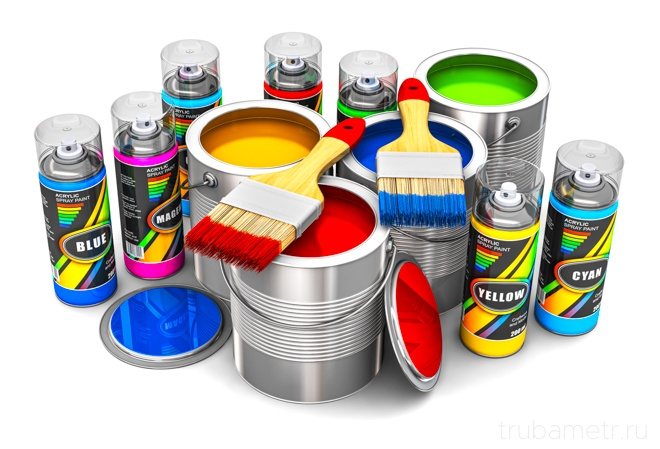

Acrylic paints
Dyes based on acrylic and polyurethane allow you to paint engineering communications from polypropylene in any desired shade, as they are available in a wide range of colors. The ease of application of such formulations and the absence of odors have made the substances one of the most popular means for painting pipe surfaces.
Acrylic and polyurethane paints do not tolerate high heat. An increase in the temperature of the painted surface can lead to cracking of the paint layer.
Therefore, acrylic and polyurethane substances must be used on pipes with the thickest possible walls. At this point, special attention must be paid if a heating system is created from pipe products.
Acrylics are applied exclusively to previously prepared surfaces. Typically, a primer is used for processing. The required preliminary preparation and the limited temperature range of use have reduced the demand for these paints.
Special dyes
The main disadvantage of special paints for polypropylene pipelines is the high price. However, such compositions are not in any way more durable than other commonly used materials for painting plastic engineering systems.
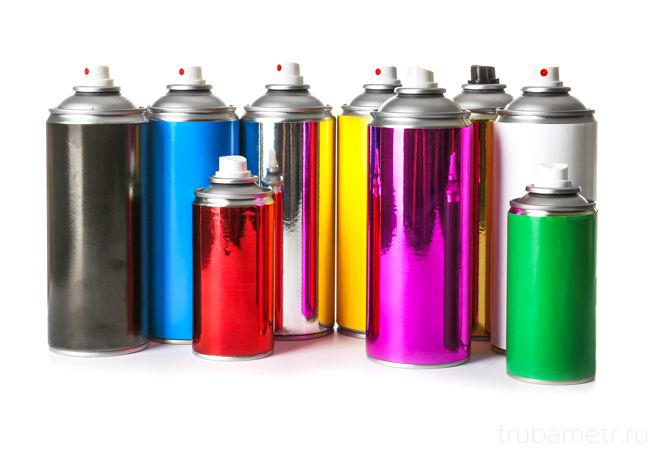

Spray paint
Solvents in special paints are not hazardous to the polymer from which tubular products are made. Such compositions are resistant to high temperatures. This allows them to be used for painting heating networks.
The drying time of special mixtures depends on the period of the year. If the work is carried out in summer on hot days, the painted pipeline will dry out longer than in moderately cool weather.
Priming paint
This method of painting polypropylene surfaces differs from other methods, since it involves preliminary priming of pipes with the same composition. Preparation of pipelines is carried out with substances released in the form of aerosols. Primers are designed to protect the treated surfaces.
The substances also help to increase the adhesion of the coloring compositions. Polypropylene pipe primers are available at markets and auto parts stores. After all, such substances are used during the painting of vehicle bodies.

